How to get an orchid to rebloom – expert tips for bountiful blooms
Experts explain how to get even a store-bought orchid to rebloom
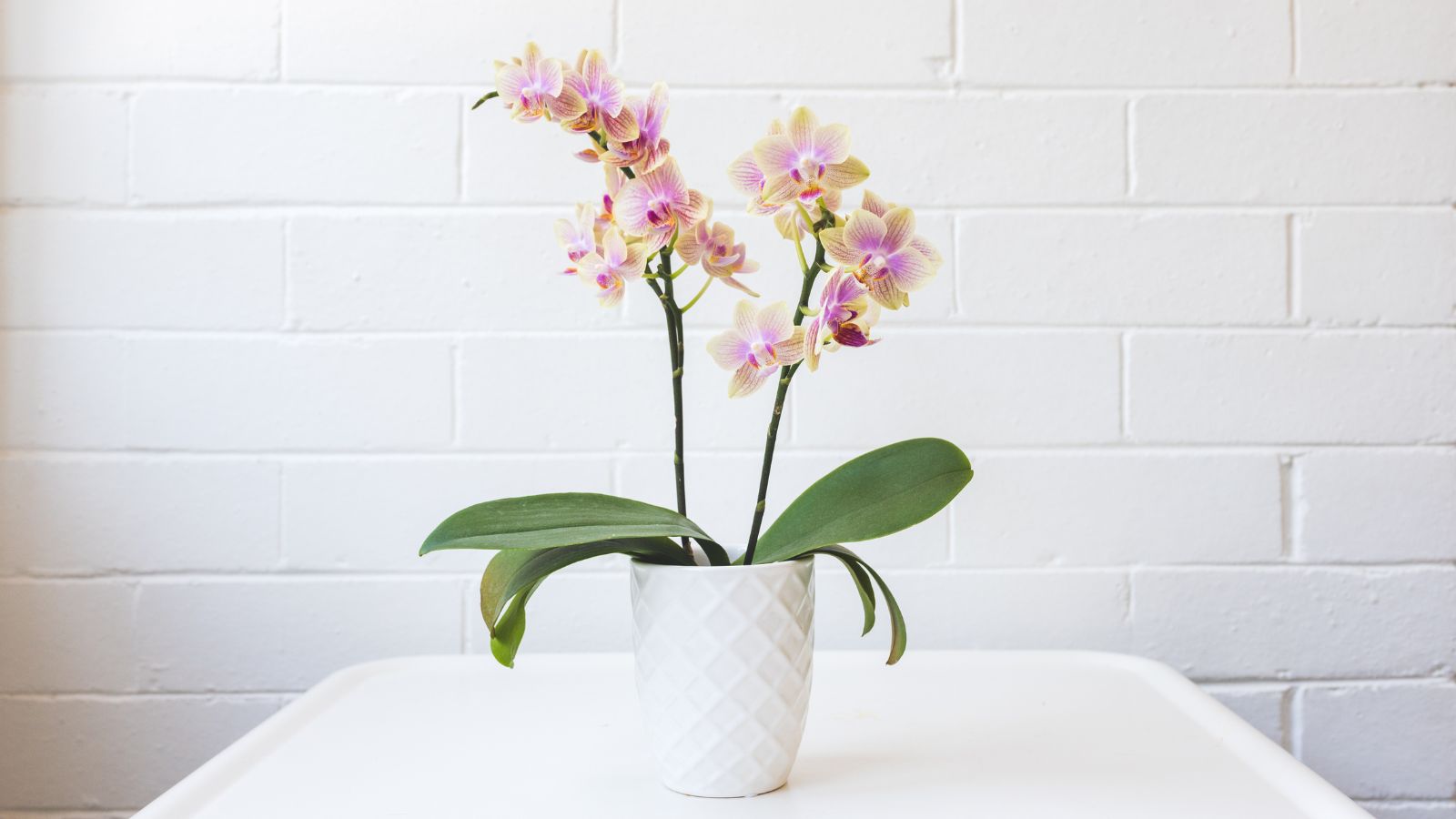

If you have been gifted a beautiful Phalaenopsis orchid, it can be disappointing when its flowers fade and fall away. Although tempting to get rid of the now dead-looking plant, it is simple to get an orchid to rebloom.
‘Who doesn’t appreciate the beautiful orchid? One of the oldest families of flowering plants, they’re absolutely gorgeous to admire! But the idea of orchid care often leaves plant parents feeling a little anxious,’ says author and plant expert Jo Lambell, founder of Beards and Daisies. ‘They’re actually surprisingly simple to care for, once you understand their needs.’
Here, experts offer step-by-step advice on how to get an orchid to rebloom to get more joy out of the simple plant.
How to get a Phalaenopsis orchid to rebloom
If you have an orchid at home, the chances are it is a Phalaenopsis orchid – the most common variety in the world. Also known as ‘moth orchids’ they are recognizable by their wide, flat leaves arranged opposite to one another on the stem, and their long, arching flower stems that not only bloom at any time of the year indoors but can last several months with the proper care.
‘One of the most frequently asked questions about orchids, is how do you get them to rebloom? Many plant parents are disappointed when the beautiful flowers of their orchids suddenly disappear but don’t panic – this doesn’t mean your orchid is dead,’ Jo Lambell reassures.
Here is how to get an orchid to look its best once again.
1. Wait until all the old flowers have fallen away
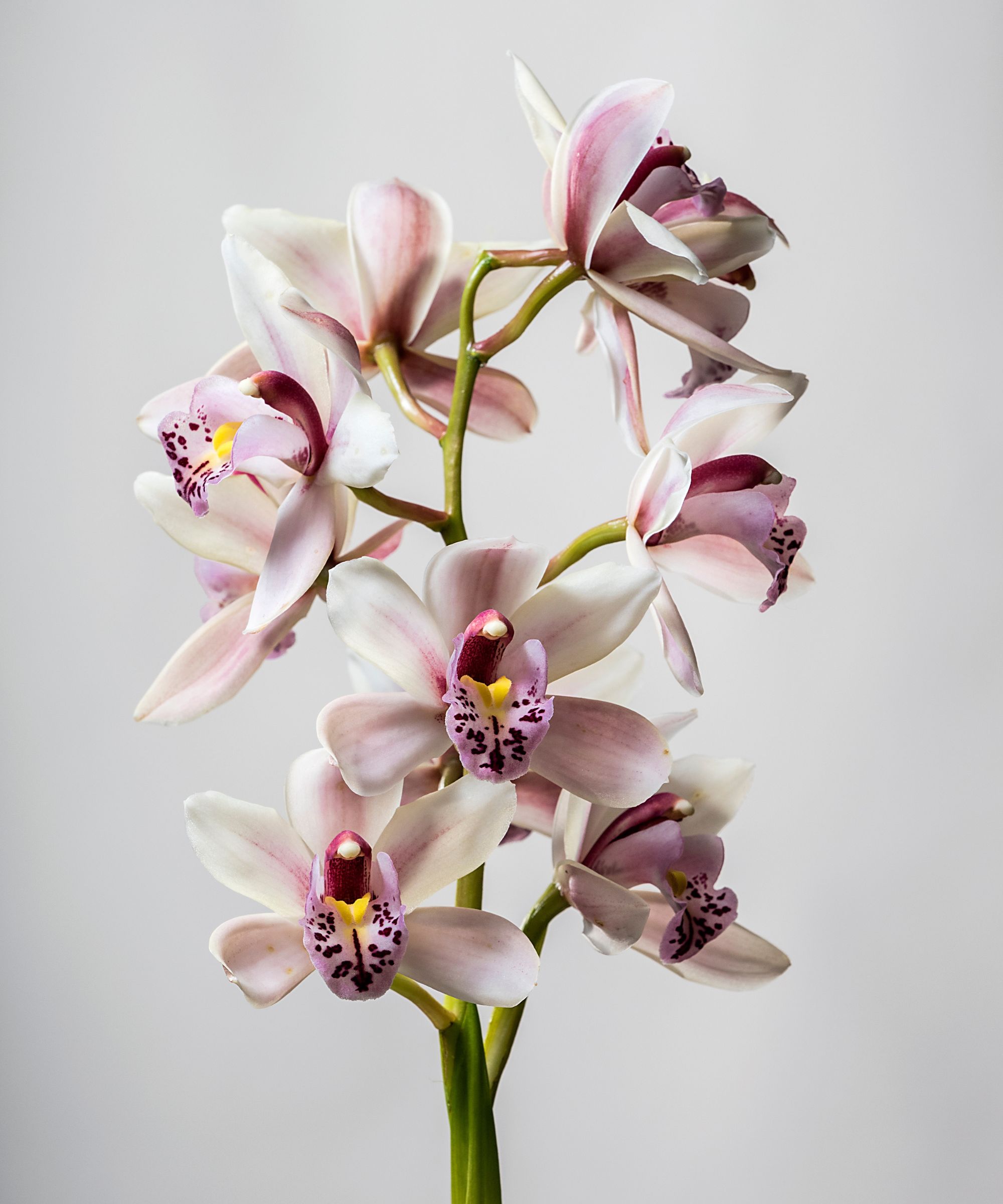
The key to getting a Phalaenopsis orchid to rebloom is to start the process as soon as the final flowers have fallen away from the plant. Getting an idea of how long orchids bloom will help you to prepare for the process in good time. Although a once-a-year bloomer outdoors, these stupendous flowers can often bloom repeatedly indoors.
'Wait for the flower heads to fade, these will then drop off when they’re ready,' says Keira Kay, Bloom & Wild's plant expert. 'You don’t need to trim these off unless you’d rather not look at the flower when it's faded.'
Once the flowers have fallen away, you will be left with a flower spike – this is where new flowers will likely grow again after dormancy.
2. Trim a green spike down to the first node, and cut a brown spike off altogether
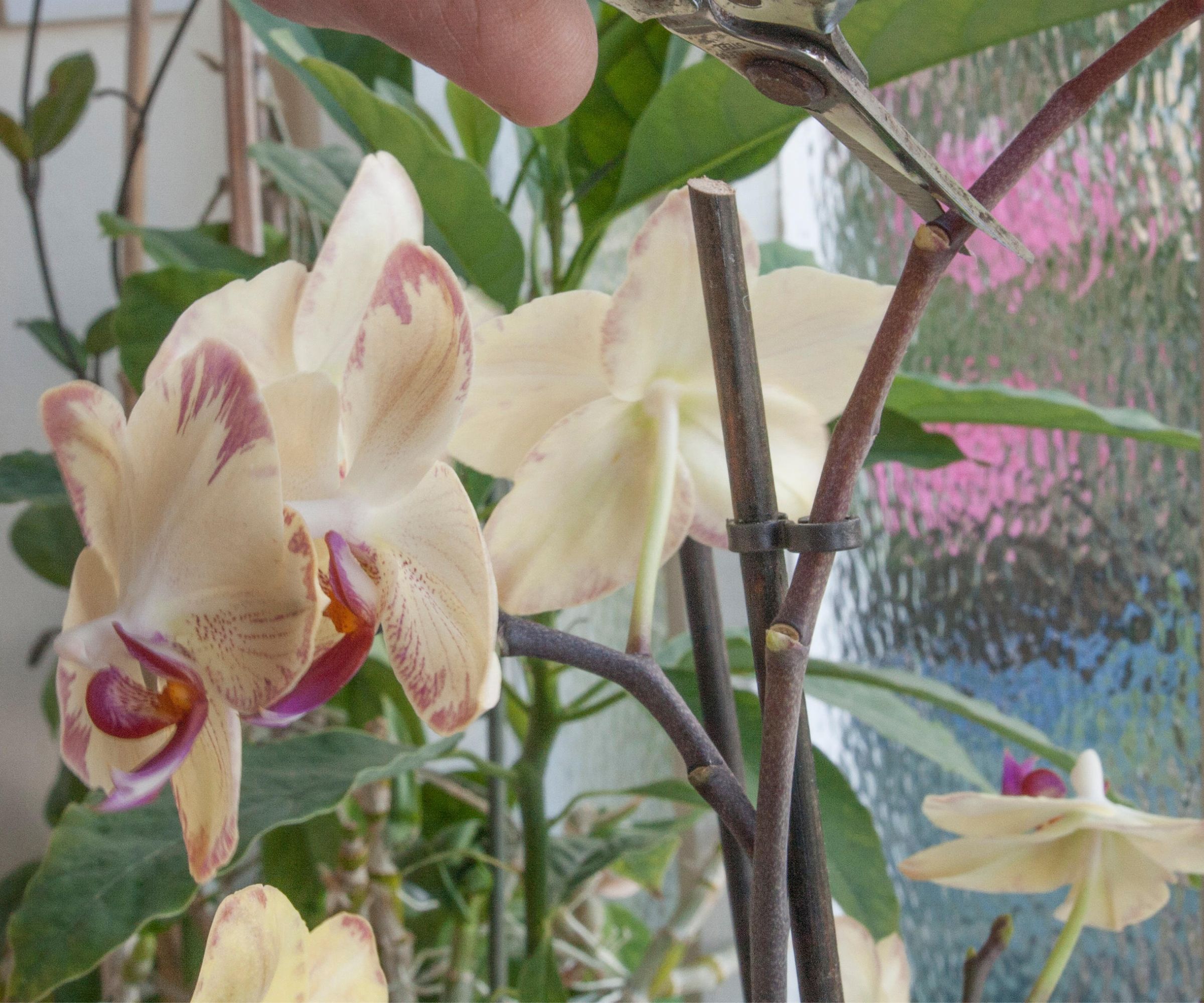
‘Once your orchid has dropped its remaining petals, it’s time to trim the stem. Just be careful not to trim it down too low – cutting the stem to just above a visible join on your orchid should help stimulate growth and encourage new flowers,’ advises Jo.
If your orchid spike has turned a papery brown color, however, then pruning an orchid down to the base is recommended. Your next set of blooming flowers will take longer, but this will allow the plant to develop a new flower spike stronger than the last.
'This trimming will stimulate the plant and encourage the production of another stem over the next few weeks,' Keira Kay explains. 'From this stem new buds will form and eventually produce flowers.'
VIVOSUN 6.5 Inch Gardening Scissors – $6.99 at Amazon
These quality snips come with stainless steel precision-sharpened blades and are ready to tackle all of your deadheading, trimming, and shaping jobs for your roses, annuals, vegetable, bonsai and small-flower gardens
3. Place the orchid in a bright but cool spot
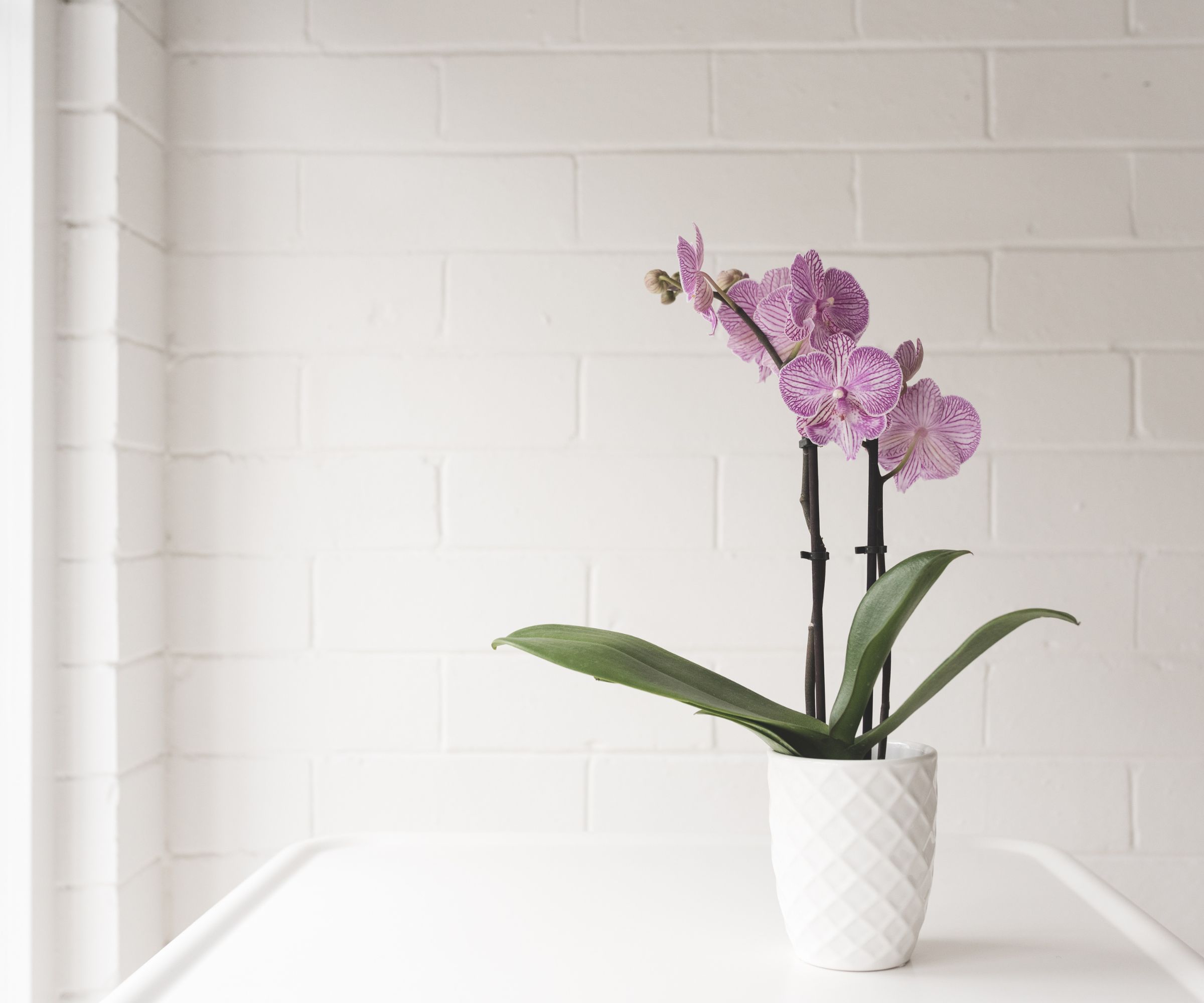
While most houseplants fight for a warm spot in your home, orchis typically requires a cooler spot to help develop flowers – especially at night. It is this need to keep a close eye on climate that gives orchids their spot as one of the hardest houseplants to keep alive. Aim to leave your orchid in a spot with nighttime temperatures of around 55-65ºF to help new flower spikes develop. This spot should also benefit from bright, but indirect sunlight.
'Find a well-lit home for the orchid as increased light will help to encourage blooming. Orchids like bright but indirect light, typically from a southern or eastern window,' Keria Kay says. 'Bright green leaves will indicate you have a healthy plant that is happy with the amount of light it is exposed to.'
Once the flower spike has developed, stake it to offer support as it grows, then return the orchid to a warmer part of the house (around 65-85ºF), particularly a humid area to allow the plant to absorb moisture from the surrounding air. 'Placing them on a pebble tray or misting them lightly will always be appreciated,' Keira Kay adds.
Room Thermometer and Hygrometer – $14.99 at Amazon
This room thermometer hygrometer helps measure the temperature and humidity level in real-time making it perfect for keeping a close eye on picky houseplants.
4. Continue to water and fertilize – even in dormancy
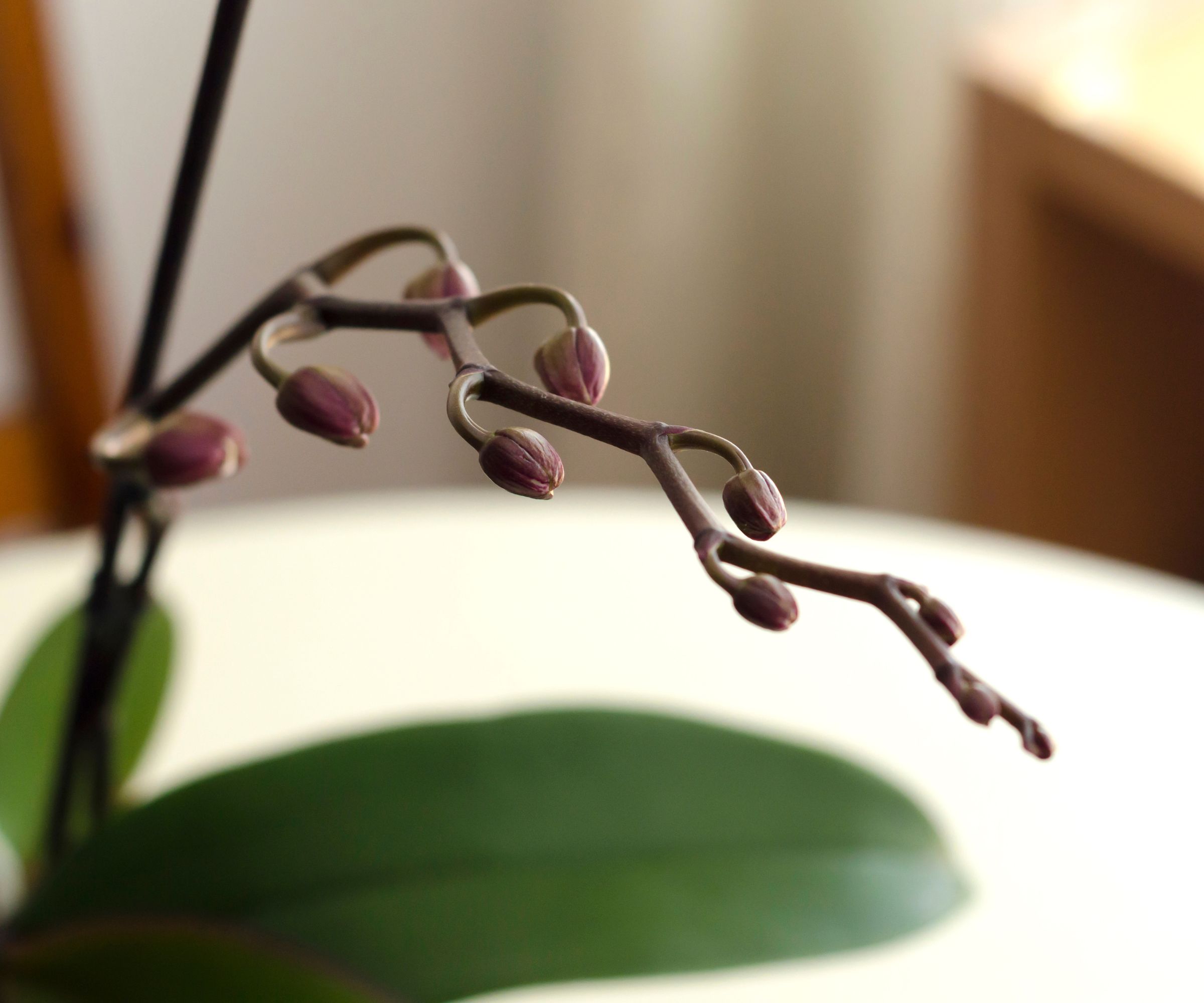
Dormancy is the flower-less period between bloom cycles where your orchid may look as if it is dead. This period is the most important window for plant care, however, especially if you want perfect blooms to re-emerge. ‘Orchids go through a cycle of blooming and resting, with their dormant resting phase lasting anywhere from six to nine months – so you’ll need a little patience!’ Jo says.
‘During your orchid's dormant stage it’s really important to keep it hydrated, but be careful not to overwater – this is one of the most common problems with orchids, they really don’t like sitting in water! So only water orchids if the top layer of soil is dry to the touch.’ Allow the plant to dry out between waterings by emptying the tray of any excess water as and when it accumulates.
'The best way to determine if the orchid needs a drink is to check the roots,' Keira Kay continues. 'Green roots are still hydrated but grey-looking roots are ready for a top-up. Be sure to drain out any excess water to avoid the roots rotting.' Because of this, keeping your orchid in a transparent pot is more advantageous than a decorative one.
‘I’d also recommend using a plant fertilizer on your orchid once a month, after its blooms have dropped, to really help supercharge growth.’ You can buy specialized orchid fertilizer on Amazon, diluted to 25% strength.
Miracle-Gro Water Soluble Orchid Food – $4.99 at Amazon
A great way to nurture orchids and other acid-loving plants this fertilizer provides deep rich leaf color, beautiful blooms, and strong root development.
5. Care for the plant while it's blooming to keep it in good condition for the next blooming period
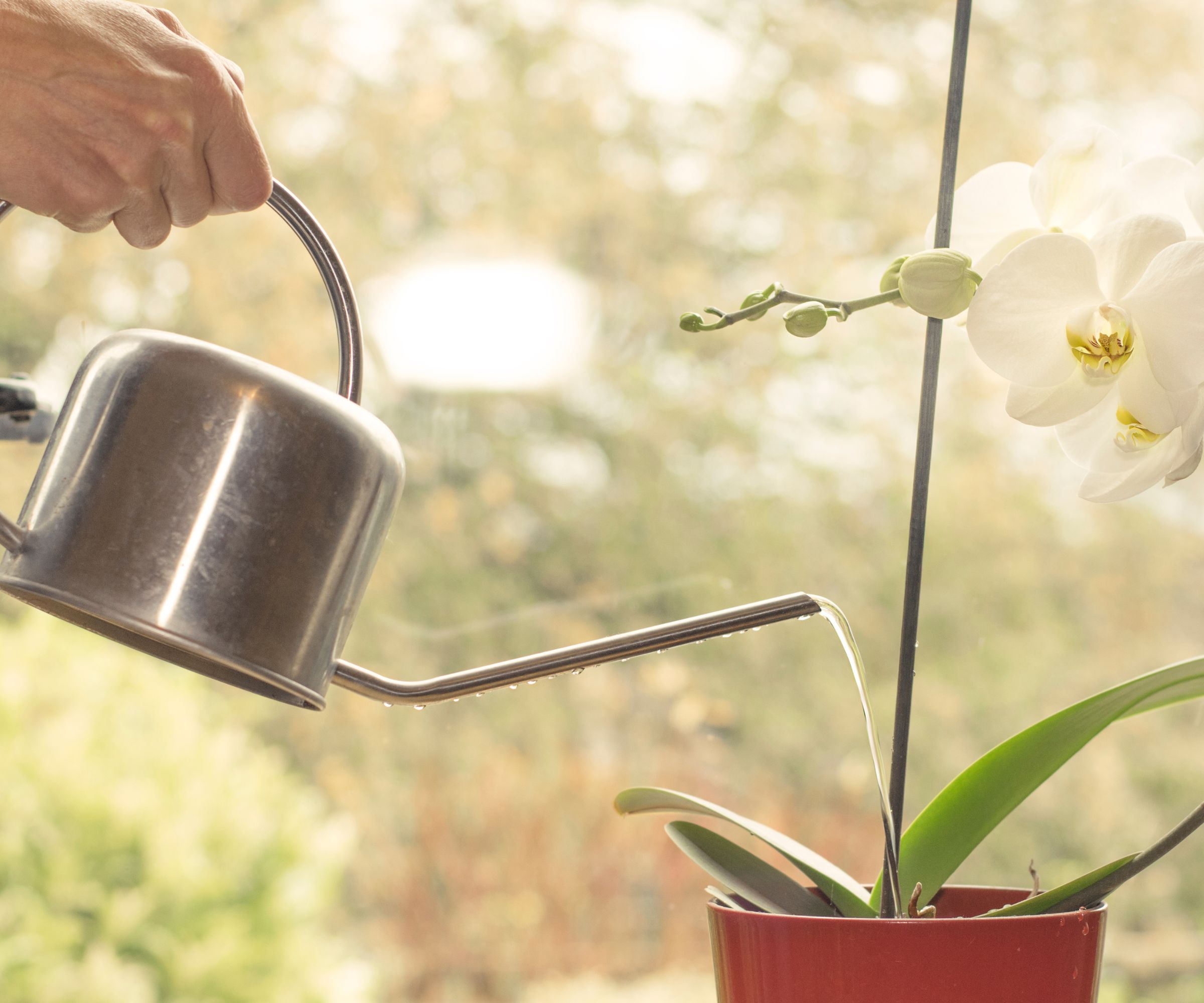
Keep on top of orchid care by watering and fertilizing the plant as it blooms. Keeping the plant healthy during the blooming period will not only prolong the flowers but ensure the plant is in good condition to provide energy for the following dormancy and reblooming cycles. There is often little need to repot orchids, so watering and fertilization are often the only requirements.
What to do if your orchid is still not blooming
If your orchid is still refusing to rebloom, then it could be an issue with its environment. Not having enough light, enough food or the correct temperature can be enough to throw the orchid off balance, resulting in a disappointing lack of flowers.
The Unkillables: 40 resilient house plants for new plant parents, available at Amazon
In The Unkillables, Jo Lambell shares her houseplant knowledge so that even the biggest plant serial killers can have an abundant indoor garden.
How long does it take for an orchid to rebloom?
An orchid can take around six to nine months to rebloom indoors, meaning patience is a virtue when caring for these blossoming flowers. During this time, it may be tempting to think of your plant as dead, but most of the time there is still life left waiting to be nurtured.
How many times can an orchid rebloom?
Most orchids can rebloom once, maybe twice a year in the right conditions with dormancy periods lasting anywhere up to nine months at a time. Different orchids will have different growth cycles and requirements.
Sign up to the Homes & Gardens newsletter
Design expertise in your inbox – from inspiring decorating ideas and beautiful celebrity homes to practical gardening advice and shopping round-ups.

Chiana has been at Homes & Gardens for two years and is our resident 'queen' of non-toxic living. She spends most of her time producing content for the Solved section of the website, helping readers get the most out of their homes through clever decluttering, cleaning, and tidying tips. She was named one of Fixr's top home improvement journalists in 2024.
-
 How to grow impatiens – garden experts reveal the secrets to growing this shade-tolerant, sparkling summer plant
How to grow impatiens – garden experts reveal the secrets to growing this shade-tolerant, sparkling summer plantBoth 'Busy Lizzie' and 'New Guinea' impatiens can thrive in shady yards
By Ellen Wells Published
-
 Charli XCX's dining room is a 'treasure-trove' of one-of-a-kind pieces – it's the most unique hosting space I've ever seen (and surprisingly replicable)
Charli XCX's dining room is a 'treasure-trove' of one-of-a-kind pieces – it's the most unique hosting space I've ever seen (and surprisingly replicable)The singer's Tudor-style dining room features eclectic furnishings, a mix of patterns and bright colors that all work together beautifully
By Hannah Ziegler Published



